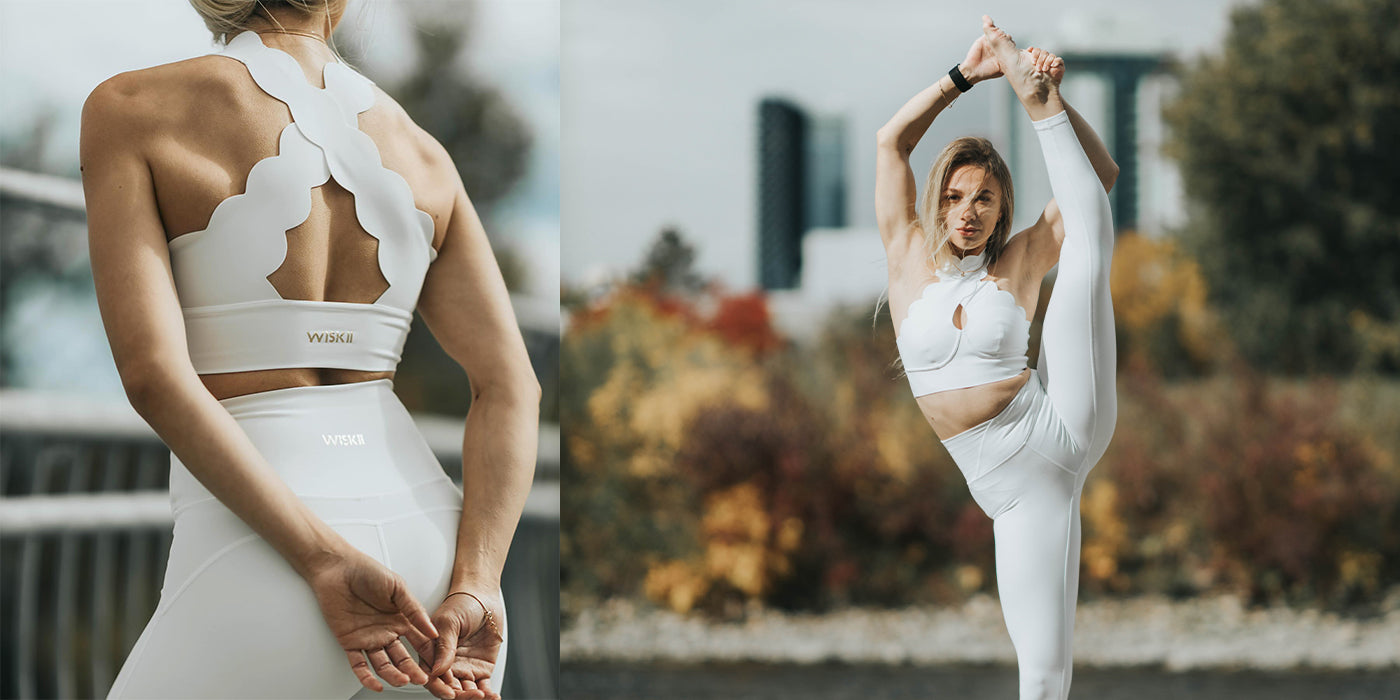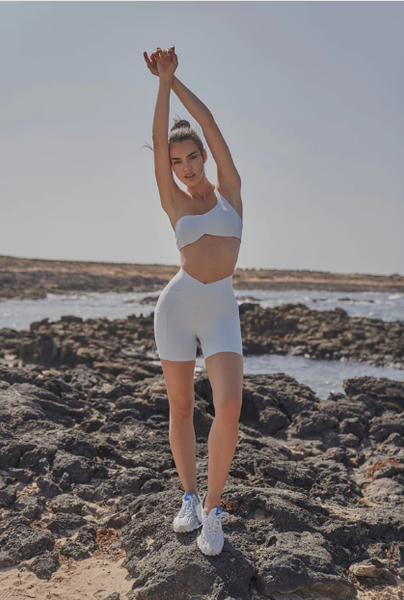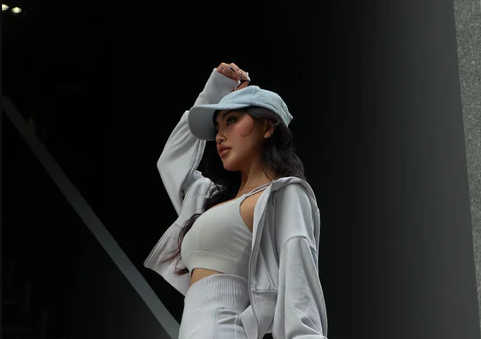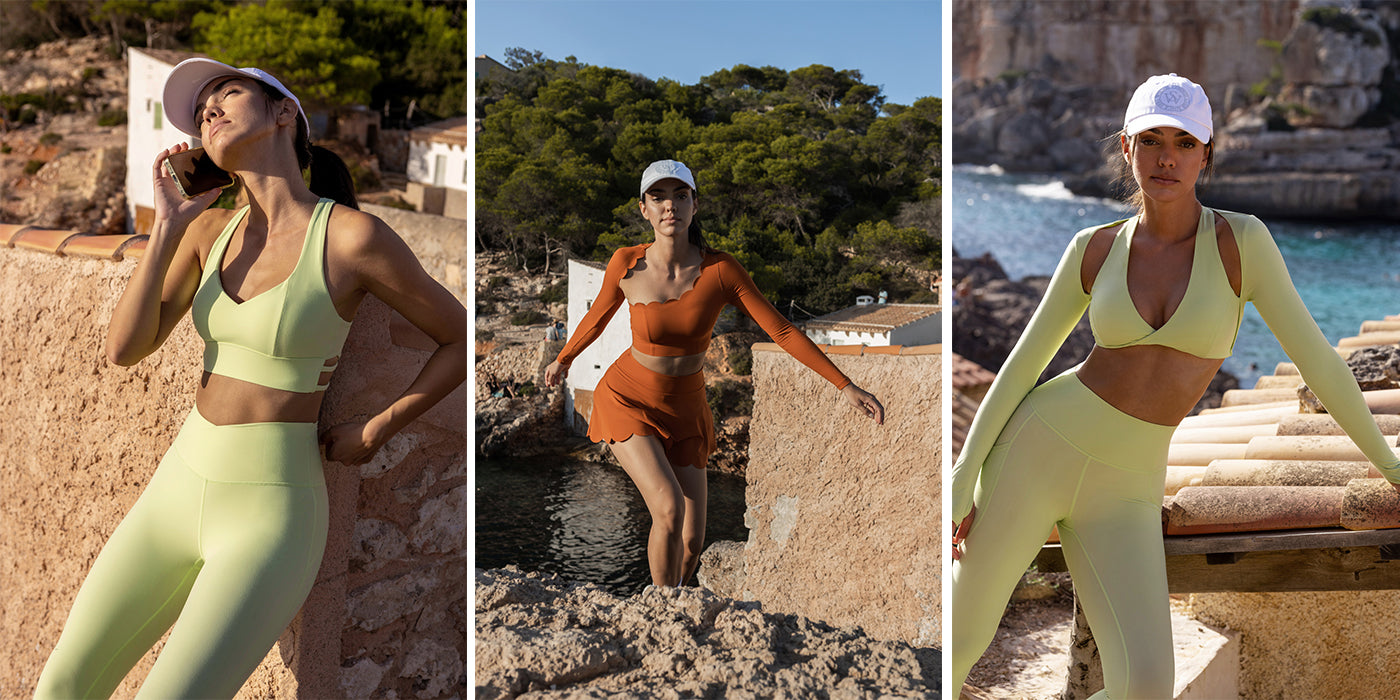
What to Wear on Day One at the Gym: A Beginner's Checklist
Navigation
- How to Prepare for Your First Day at the Gym?
- What Are the Must-Have Pieces for Your Gym Wardrobe?
- How Should You Accessorize for the Gym?
- Why Is Layering Important and How to Do It Right?
- What Should You Wear for Different Types of Workouts?
- What Are the Common Clothing Mistakes to Avoid at the Gym?
- The Final Stretch: Suiting Up for Success at the Gym

How to Prepare for Your First Day at the Gym?
Feeling ready and confident is key on your first day at the gym. Here's a straightforward approach to making sure you're well-prepared.
Understand Gym Rules and Culture
Every gym has its own set of rules and culture.
- Do a Walkthrough: Familiarize yourself with the layout, equipment, and facilities.
- Learn the Etiquette: Check if there are specific rules about bringing in bags, using your phone, or reserving equipment.
Pack Your Gym Bag Smartly
Your gym bag should have all the essentials without being overloaded.
| CATEGORY | ITEMS |
|---|---|
| Athletic Attire |
|
| Hydration | Water bottle |
| Hygiene Kit |
|
| Sanitizing Items |
|
| Laundry Bag | Separate bag for dirty clothes |
Plan Your Workout in Advance
Having a workout plan can help ease any nerves and give you direction.
- Start Simple: Consider beginning with machines that are user-friendly or a light cardio session.
- Ask for Help: Don't hesitate to ask gym staff for assistance or an introduction to the equipment.
Set Realistic Goals
It's important not to overdo it on your first day.
- Be Patient: Focus on getting familiar with the gym environment.
- Stay Comfortable: Listen to your body and avoid pushing too hard too soon.
Aftercare
Post-workout care is as important as the prep.
- Cool Down: Take time to stretch or walk to normalize your heart rate.
- Hygiene: Make use of showers or clean up as needed to feel refreshed after your workout.
With these steps in mind, you'll walk into the gym feeling prepared and leave feeling accomplished, ready to return for your next session.
What Are the Must-Have Pieces for Your Gym Wardrobe?
When you're building your gym wardrobe, think about these essentials that combine comfort with functionality. They'll make your workouts more enjoyable and effective.
Supportive Athletic Footwear
Your feet are your foundation at the gym, so start from the ground up with the right shoes.
- Stability: Look for stability in your shoes if you plan to do weight training or low-impact exercises.
- Cushioning: If running or high-impact activities are your go-to, shoes with good cushioning are vital.
- Fit: Ensure they fit well; try them on in the evening when your feet are slightly swollen, like they might be during a workout.
High-Quality Sports Bras
Support up top is just as crucial, especially to avoid discomfort while moving.
- Fit Test: Jump around in the fitting room to ensure everything stays in place.
- Adjustability: Choose bras with adjustable straps and bands for a personalized fit.
-
Activity Level: Match the support level of the bra with the intensity of your workout.
Tops: Tanks vs. T-Shirts
Upper body wear should balance ease of movement with coverage.- Material: Both tanks and t-shirts should be made of moisture-wicking material to keep you dry.
- Cut: Consider armhole and neckline cuts for comfort; tanks often offer more ventilation, while t-shirts can prevent chafing under the arms.
- Layering: Remember, you can always layer a breathable long-sleeve top over a tank or tee on cooler days.
Bottoms: Leggings vs. Shorts
Lower body wear will vary based on your personal comfort level and the types of exercise you're doing.
- Length: Long leggings protect against gym equipment and mat friction, while shorts may be preferable for hotter environments or intense cardio sessions.
- Waistband: A secure, high waistband can ensure your bottoms stay put during all ranges of motion.
-
Pockets: Look for options with pockets if you like to keep your phone or keys on you.
With this structured approach, you should be able to build a functional, comfortable gym wardrobe that allows you to focus solely on your fitness journey.
How Should You Accessorize for the Gym?
While your main gym attire is essential, the right accessories can make a big difference in your comfort and convenience during a workout. Here's what to consider:
Hair Management Solutions
Keeping your hair out of your face will help you focus on your workout without distractions.
- Headbands: They can keep both short flyaways and longer bangs under control.
- Hair Ties: Opt for no-tangle ties that won't break or pull your hair.
Sweat-Management Accessories
Managing sweat effectively can prevent discomfort and even skin irritation.
- Wristbands: They're not just for style; wristbands can dab away forehead sweat quickly.
- Towels: A small, quick-dry towel can be a workout game-changer when it comes to keeping dry.
Fitness Trackers and Smartwatches
Keep track of your progress and stay motivated with a tech accessory.
- Basic Features: Look for devices that measure heart rate, count steps, and track calories burned.
- Compatibility: Ensure the device syncs with your phone or computer for easy tracking.
With these accessories, you'll reduce distractions and increase efficiency in your gym sessions. They are the small details that have a big impact on your gym experience, helping you stay clean, dry, and focused on the task at hand.
Why Is Layering Important and How to Do It Right?
Layering your clothes for the gym is about more than just matching styles-it's about preparing for changes in your body temperature as you work out and cool down. Here's how to layer effectively:
The Need for Layers
When you start exercising, your body gets warmer. A layered outfit lets you remove pieces to avoid overheating.
- Starting Layer: Begin with a moisture-wicking base layer to keep sweat off your skin.
- Middle Layer: Add a breathable long-sleeve top or a zip-up that you can easily take off.
- Outer Layer: Consider a lightweight jacket or hoodie that you can shed once your body temperature rises.
Suggested Lightweight Jackets and Pullovers
Your outermost layer should be easy to remove and not too bulky.
- Materials: Look for materials like fleece or thin synthetic fabrics that offer warmth without weight.
- Ventilation: Features like underarm zips can help regulate temperature.
When to Shed Layers
Listen to your body. Usually, after the warm-up or a few minutes into your main workout, you'll feel ready to remove a layer. Make sure you have a designated spot to place your clothing, like on the side of the gym or in a locker.
By dressing in layers, you ensure that you can comfortably transition from warm-ups, through an intense session, to cooling down without ever feeling too hot or too cold. This way, you can keep your focus squarely on your workout routine.
What Should You Wear for Different Types of Workouts?
Depending on the type of workout you're doing, your clothing choices should change to match the demands of the activity. Let's look at some common workouts and what works best for each.
Outfits for Cardio Workouts
For activities like running, cycling, or using the elliptical, you need breathable and moisture-wicking clothes to keep you cool.
- Tops: Choose lightweight and airy materials.
- Bottoms: Shorts or leggings that provide freedom of movement and breathability are best.
- Shoes: Properly cushioned footwear is key to absorb impact.
Attire for Strength Training
When lifting weights, you'll want clothing that doesn't restrict your movements but offers support.
- Tops: Fitted tops work well so they don't catch on equipment.
- Bottoms: Stretchy fabrics in leggings or shorts that allow a full range of motion are ideal.
- Shoes: Shoes with good traction and stability will help you maintain proper form.
Clothes for Yoga and Pilates
These workouts require stretching and flexibility, so form-fitting clothes that stretch with you and stay in place are necessary.
- Tops: Form-fitting tanks or tops made from stretchable fabrics work well.
- Bottoms: Leggings are typically favored for their snug fit that allows for visibility of your alignment and posture.
- Shoes: You can go barefoot or wear socks with grips on the bottom for stability.
Specialty Classes (Cycling, Zumba, etc.)
Specialty classes often have specific requirements or recommendations for clothing based on the activity's nature.
- Cycling: Padded shorts or pants can make long bike rides more comfortable.
- Zumba/Dance: Clothes that move with you and don't restrict your dance moves are important.
- Shoes: Ensure your shoes match the activity – cycling shoes for spin class, dance sneakers for Zumba, and so on.
By matching your outfit to your workout type, you help ensure that your gym time is as effective as it can be, keeping you focused on your performance and goals.
What Are the Common Clothing Mistakes to Avoid at the Gym?
Dressing for the gym is not just about looking good; it's also about being practical and safe. Here are some common clothing mistakes to watch out for:
Overly Baggy Clothes
While you want to be comfortable, clothes that are too loose can be a hazard.
- Risk: They can get caught in machines or trip you up.
- Solution: Opt for fitted, yet flexible clothing that moves with your body.
Wearing Jewelry
Jewelry can snag on equipment, scratch surfaces, or even cause injuries.
- Risk: Rings, bracelets, and necklaces can catch on something or impact your ability to grip properly.
- Solution: Leave your valuables at home or store them safely in a locker.
Inappropriate Footwear
Shoes that don't support your activity can lead to discomfort or injury.
- Risk: Wearing flip-flops, sandals, or going barefoot where not appropriate could cause slips, falls, or foot injuries.
- Solution: Wear proper gym shoes that provide the right support and protection for your chosen workout.
Not Dressing for Sweat
Workouts mean sweat, and some fabrics can become heavy when wet and may irritate your skin.
- Risk: Cotton absorbs moisture but doesn't dry quickly, becoming uncomfortable.
- Solution: Choose moisture-wicking synthetic fabrics that keep you dry and comfortable.
Forgetting Seasonal Needs
Your gym outfit should reflect the season, especially if you're traveling to and from the gym in cold or hot weather.
- Risk: Not dressing appropriately for the weather outside can leave you too cold or overheated before and after your workout.
- Solution: Remember to layer accordingly and adjust as needed once you're inside the gym.
By steering clear of these common mistakes, you'll ensure your time at the gym is both effective and safe. It's all about striking the balance between comfort, functionality, and safety with your gym attire choices.
The Final Stretch: Suiting Up for Success at the Gym
The right gym clothes can really boost your workout. Make sure you've got supportive shoes, comfy moisture-wicking outfits, and those handy extras like hair ties and a water bottle. The goal is to feel good, move freely, and stay focused. Forget about fashion – it's all about feeling ready to tackle your fitness goals. Pack smart, dress smart, and remember: at the gym, it's you versus you. So gear up, get going, and enjoy the journey to a healthier you!








Leave a comment
This site is protected by hCaptcha and the hCaptcha Privacy Policy and Terms of Service apply.